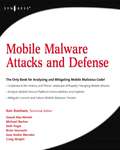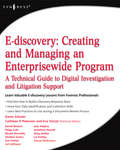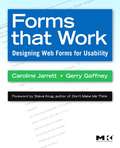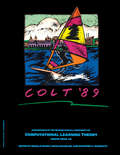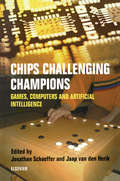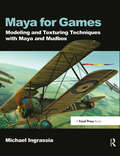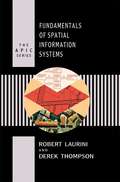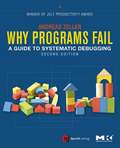- Table View
- List View
Cisco Router and Switch Forensics: Investigating and Analyzing Malicious Network Activity
by Dale LiuCisco IOS (the software that runs the vast majority of Cisco routers and all Cisco network switches) is the dominant routing platform on the Internet and corporate networks. This widespread distribution, as well as its architectural deficiencies, makes it a valuable target for hackers looking to attack a corporate or private network infrastructure. Compromised devices can disrupt stability, introduce malicious modification, and endanger all communication on the network. For security of the network and investigation of attacks, in-depth analysis and diagnostics are critical, but no book currently covers forensic analysis of Cisco network devices in any detail. Cisco Router and Switch Forensics is the first book devoted to criminal attacks, incident response, data collection, and legal testimony on the market leader in network devices, including routers, switches, and wireless access points. Why is this focus on network devices necessary? Because criminals are targeting networks, and network devices require a fundamentally different approach than the process taken with traditional forensics. By hacking a router, an attacker can bypass a network's firewalls, issue a denial of service (DoS) attack to disable the network, monitor and record all outgoing and incoming traffic, or redirect that communication anywhere they like. But capturing this criminal activity cannot be accomplished with the tools and techniques of traditional forensics. While forensic analysis of computers or other traditional media typically involves immediate shut-down of the target machine, creation of a duplicate, and analysis of static data, this process rarely recovers live system data. So, when an investigation focuses on live network activity, this traditional approach obviously fails. Investigators must recover data as it is transferred via the router or switch, because it is destroyed when the network device is powered down. In this case, following the traditional approach outlined in books on general computer forensics techniques is not only insufficient, but also essentially harmful to an investigation.Jargon buster: A network switch is a small hardware device that joins multiple computers together within one local area network (LAN). A router is a more sophisticated network device that joins multiple wired or wireless networks together.The only book devoted to forensic analysis of routers and switches, focusing on the operating system that runs the vast majority of network devices in the enterprise and on the InternetOutlines the fundamental differences between router forensics and traditional forensics, a critical distinction for responders in an investigation targeting network activityDetails where network forensics fits within the entire process of an investigation, end to end, from incident response and data collection to preparing a report and legal testimony
SOA and Web Services Interface Design: Principles, Techniques, and Standards (The MK/OMG Press)
by James BeanIn SOA and Web Services Interface Design, data architecture guru James Bean teaches you how to design web service interfaces that are capable of being extended to accommodate ever changing business needs and promote incorporation simplicity. The book first provides an overview of critical SOA principles, thereby offering a basic conceptual summary. It then provides explicit, tactical, and real-world techniques for ensuring compliance with these principles. Using a focused, tutorial-based approach the book provides working syntactical examples - described by Web services standards such as XML, XML Schemas, WSDL and SOAP - that can be used to directly implement interface design procedures, thus allowing you immediately generate value from your efforts. In summary, SOA and Web Services Interface Design provides the basic theory, but also design techniques and very specific implementable encoded interface examples that can be immediately employed in your work, making it an invaluable practical guide to any practitioner in today's exploding Web-based service market.Provides chapters on topics of introductory WSDL syntax and XML Schema syntax, taking take the reader through fundamental concepts and into deeper techniques and allowing them to quickly climb the learning curve.Provides working syntactical examples - described by Web services standards such as XML, XML Schemas, WSDL and SOAP - that can be used to directly implement interface design procedures.Real-world examples generated using the Altova XML Spy tooling reinforce applicability, allowing you to immediately generate value from their efforts.
Building a Digital Forensic Laboratory: Establishing and Managing a Successful Facility
by Andrew Jones Craig ValliThe need to professionally and successfully conduct computer forensic investigations of incidents and crimes has never been greater. This has caused an increased requirement for information about the creation and management of computer forensic laboratories and the investigations themselves. This includes a great need for information on how to cost-effectively establish and manage a computer forensics laboratory. This book meets that need: a clearly written, non-technical book on the topic of computer forensics with emphasis on the establishment and management of a computer forensics laboratory and its subsequent support to successfully conducting computer-related crime investigations.Provides guidance on creating and managing a computer forensics labCovers the regulatory and legislative environment in the US and EuropeMeets the needs of IT professionals and law enforcement as well as consultants
Stealing the Network: The Complete Series Collector's Edition, Final Chapter, and DVD
by Johnny Long Ryan Russell Timothy Mullen"Stealing the Network: How to Own the Box is a unique book in the fiction department. It combines stories that are fictional, with technology that is real. While none of the stories have happened, there is no reason why they could not. You could argue it provides a road map for criminal hackers, but I say it does something else: it provides a glimpse into the creative minds of some of today’s best hackers, and even the best hackers will tell you that the game is a mental one." – from the Foreword to the first Stealing the Network book, How to Own the Box, Jeff Moss, Founder & Director, Black Hat, Inc. and Founder of DEFCON For the very first time the complete Stealing the Network epic is available in an enormous, over 1000 page volume complete with the final chapter of the saga and a DVD filled with behind the scenes video footage! These groundbreaking books created a fictional world of hacker superheroes and villains based on real world technology, tools, and tactics. It is almost as if the authors peered into the future as many of the techniques and scenarios in these books have come to pass. This book contains all of the material from each of the four books in the Stealing the Network series. All of the stories and tech from: How to Own the Box How to Own a Continent How to Own an Identity How to Own a Shadow Plus: Finally - find out how the story ends! The final chapter is here! A DVD full of behind the scenes stories and insider info about the making of these cult classics! * Now for the first time the entire series is one 1000+ page book* The DVD contains 20 minutes of behind the scenes footage* Readers will finally learn the fate of "Knuth" in the much anticipated Final Chapter
Mobile Malware Attacks and Defense
by Ken DunhamMalware has gone mobile, and the security landscape is changing quickly with emerging attacks on cell phones, PDAs, and other mobile devices. This first book on the growing threat covers a wide range of malware targeting operating systems like Symbian and new devices like the iPhone. Examining code in past, current, and future risks, protect your banking, auctioning, and other activities performed on mobile devices. * Visual PayloadsView attacks as visible to the end user, including notation of variants. * Timeline of Mobile Hoaxes and ThreatsUnderstand the history of major attacks and horizon for emerging threates. * Overview of Mobile Malware FamiliesIdentify and understand groups of mobile malicious code and their variations. * Taxonomy of Mobile MalwareBring order to known samples based on infection, distribution, and payload strategies. * Phishing, SMishing, and Vishing AttacksDetect and mitigate phone-based phishing (vishing) and SMS phishing (SMishing) techniques. * Operating System and Device VulnerabilitiesAnalyze unique OS security issues and examine offensive mobile device threats. * Analyze Mobile MalwareDesign a sandbox for dynamic software analysis and use MobileSandbox to analyze mobile malware. * Forensic Analysis of Mobile MalwareConduct forensic analysis of mobile devices and learn key differences in mobile forensics. * Debugging and Disassembling Mobile MalwareUse IDA and other tools to reverse-engineer samples of malicious code for analysis. * Mobile Malware Mitigation MeasuresQualify risk, understand threats to mobile assets, defend against attacks, and remediate incidents.* Understand the History and Threat Landscape of Rapidly Emerging Mobile Attacks * Analyze Mobile Device/Platform Vulnerabilities and Exploits * Mitigate Current and Future Mobile Malware Threats
Mac OS X, iPod, and iPhone Forensic Analysis DVD Toolkit
by Jesse VarsaloneThis book provides digital forensic investigators, security professionals, and law enforcement with all of the information, tools, and utilities required to conduct forensic investigations of computers running any variant of the Macintosh OS X operating system, as well as the almost ubiquitous iPod and iPhone. Digital forensic investigators and security professionals subsequently can use data gathered from these devices to aid in the prosecution of criminal cases, litigate civil cases, audit adherence to federal regulatory compliance issues, and identify breech of corporate and government usage policies on networks. MAC Disks, Partitioning, and HFS+ File System Manage multiple partitions on a disk, and understand how the operating system stores data. FileVault and Time Machine Decrypt locked FileVault files and restore files backed up with Leopard's Time Machine. Recovering Browser History Uncover traces of Web-surfing activity in Safari with Web cache and .plist files Recovering Email Artifacts, iChat, and Other Chat Logs Expose communications data in iChat, Address Book, Apple's Mail, MobileMe, and Web-based email. Locating and Recovering Photos Use iPhoto, Spotlight, and shadow files to find artifacts pof photos (e.g., thumbnails) when the originals no longer exist. Finding and Recovering QuickTime Movies and Other Video Understand video file formats--created with iSight, iMovie, or another application--and how to find them. PDF, Word, and Other Document Recovery Recover text documents and metadata with Microsoft Office, OpenOffice, Entourage, Adobe PDF, or other formats. Forensic Acquisition and Analysis of an iPod Documentseizure of an iPod model and analyze the iPod image file and artifacts on a Mac. Forensic Acquisition and Analysis of an iPhone Acquire a physical image of an iPhone or iPod Touch and safely analyze without jailbreaking.Includes Unique Information about Mac OS X, iPod, iMac, and iPhone Forensic Analysis Unavailable Anywhere ElseAuthors Are Pioneering Researchers in the Field of Macintosh Forensics, with Combined Experience in Law Enforcement, Military, and Corporate Forensics
E-discovery: A Technical Guide to Digital Investigation and Litigation Support
by Karen A. SchulerOne of the hottest topics in computer forensics today, electronic discovery (e-discovery) is the process by which parties involved in litigation respond to requests to produce electronically stored information (ESI). According to the 2007 Socha-Gelbmann Electronic Discovery Survey, it is now a $2 billion industry, a 60% increase from 2004, projected to double by 2009. The core reason for the explosion of e-discovery is sheer volume; evidence is digital and 75% of modern day lawsuits entail e-discovery.A recent survey reports that U.S. companies face an average of 305 pending lawsuits internationally. For large U.S. companies ($1 billion or more in revenue)that number has soared to 556 on average, with an average of 50 new disputes emerging each year for nearly half of them. To properly manage the role of digital information in an investigative or legal setting, an enterprise--whether it is a Fortune 500 company, a small accounting firm or a vast government agency--must develop an effective electronic discovery program. Since the amendments to the Federal Rules of Civil Procedure, which took effect in December 2006, it is even more vital that the lifecycle of electronically stored information be understood and properly managed to avoid risks and costly mistakes. This books holds the keys to success for systems administrators, information security and other IT department personnel who are charged with aiding the e-discovery process.*Comprehensive resource for corporate technologists, records managers, consultants, and legal team members to the e-discovery process, with information unavailable anywhere else*Offers a detailed understanding of key industry trends, especially the Federal Rules of Civil Procedure, that are driving the adoption of e-discovery programs*Includes vital project management metrics to help monitor workflow, gauge costs and speed the process
Nokia Firewall, VPN, and IPSO Configuration Guide
by Andrew Hay Keli Hay Peter Giannoulis"While Nokia is perhaps most recognized for its leadership in the mobile phone market, they have successfully demonstrated their knowledge of the Internet security appliance market and its customers requirements."--Chris Christiansen, Vice President, Internet Infrastructure and Security Software, IDC.Syngress has a long history of publishing market-leading books for system administrators and security professionals on commercial security products, particularly Firewall and Virtual Private Network (VPN) appliances from Cisco, Check Point, Juniper, SonicWall, and Nokia (see related titles for sales histories). The Nokia Firewall, VPN, and IPSO Configuration Guide will be the only book on the market covering the all-new Nokia Firewall/VPN Appliance suite. Nokia Firewall/VPN appliances are designed to protect and extend the network perimeter.According to IDC research, Nokia Firewall/VPN Appliances hold the #3 worldwide market-share position in this space behind Cisco and Juniper/NetScreen. IDC estimated the total Firewall/VPN market at $6 billion in 2007, and Nokia owns 6.6% of this market. Nokia's primary customers for security appliances are Mid-size to Large enterprises who need site-to-site connectivity and Mid-size to Large enterprises who need remote access connectivity through enterprise-deployed mobile devices. Nokia appliances for this market are priced form $1,000 for the simplest devices (Nokia IP60) up to $60,0000 for large enterprise- and service-provider class devices (like the Nokia IP2450 released in Q4 2007). While the feature set of such a broad product range obviously varies greatly, all of the appliances run on the same operating system: Nokia IPSO (IPSO refers to Ipsilon Networks, a company specializing in IP switching acquired by Nokia in 1997. The definition of the acronym has little to no meaning for customers.) As a result of this common operating system across the product line, The Nokia Firewall, VPN, and IPSO Configuration Guide will be an essential reference to users of any of these products. Users manage the Nokia IPSO (which is a Linux variant, specifically designed for these appliances) through a Web interface called Nokia Network Voyager or via a powerful Command Line Interface (CLI). Coverage within the book becomes increasingly complex relative to the product line.The Nokia Firewall, VPN, and IPSO Configuration Guide and companion Web site will provide seasoned network administrators and security professionals with the in-depth coverage and step-by-step walkthroughs they require to properly secure their network perimeters and ensure safe connectivity for remote users. The book contains special chapters devoted to mastering the complex Nokia IPSO command line, as well as tips and tricks for taking advantage of the new "ease of use" features in the Nokia Network Voyager Web interface. In addition, the companion Web site offers downloadable video walkthroughs on various installation and troubleshooting tips from the authors.* Only book on the market covering Nokia Firewall/VPN appliances, which hold 6.6% of a $6 billion market* Companion website offers video walkthroughs on various installation and troubleshooting tips from the authors* Special chapters detail mastering the complex Nokia IPSO command line, as well as tips and tricks for taking advantage of the new "ease of use" features in the Nokia Network Voyager Web interface
GFI Network Security and PCI Compliance Power Tools
by Brien PoseyToday all companies, U.S. federal agencies, and non-profit organizations have valuable data on their servers that needs to be secured. One of the challenges for IT experts is learning how to use new products in a time-efficient manner, so that new implementations can go quickly and smoothly. Learning how to set up sophisticated products is time-consuming, and can be confusing. GFI's LANguard Network Security Scanner reports vulnerabilities so that they can be mitigated before unauthorized intruders can wreck havoc on your network. To take advantage of the best things that GFI's LANguard Network Security Scanner has to offer, you'll want to configure it on your network so that it captures key events and alerts you to potential vulnerabilities before they are exploited. In this book Brien Posey has pinpointed the most important concepts with examples and screenshots so that systems administrators and security engineers can understand how to get the GFI security tools working quickly and effectively. His straightforward, no nonsense writing style is devoid of difficult to understand technical jargon. His descriptive examples explain how GFI's security tools enhance the security controls that are already built into your server's operating system. * Secure Your Network Master the various components that make up the management console and prepare to use it for most tasks. * Analyze Scan Results View detected vulnerabilities, save and print results, query open ports, and filter your results. * Install and Use the ReportPack Learn how to build custom reports and schedule reports. See how filters allow you to control the information that is processed when a reports is run. * Perform a Hardware Inventory and Compile a Software Inventory Use GFI to do your inventories and perform audits. See how to blacklist and whitelist applications to make your reports more meaningful. * Manage Patches Effectively See how to deploy a specific patch, perform a scan comparison, uninstall a patch, and deploy custom software. * Use GFI EndPointSecurity to Lock Down Hardware Be prepared for users trying to install unauthorized software, copy sensitive data onto removable media, or perform other actions to try and circumvent your network's security. * Create Protection Policies Control the level of device access allowed on a system and create separate protection policies; one for servers, one for workstations, and one for laptops. Learn how to deploy agents. * Regulate Specific Devices Master some of the advanced features of GFI: locking device categories, blacklisting and whitelisting devices, and using file type restrictions. * Monitor Device Usage Keep tabs on your network by setting logging options, setting alerting options, and generating end point security reports.* Use GFI EndPointSecurity to Lock Down Hardware* Create Protection Policies to Control the Level of Device Access* Master Advanced Features of GFI: Locking Device Categories, Blacklisting and Whitelisting Devices, Using File Type Restrictions and More
The Real MCTS/MCITP Exam 70-620 Prep Kit: Independent and Complete Self-Paced Solutions
by Anthony PiltzeckerThis exam is designed to validate proficieny supporting Windows Vista client. This exam will fulfill the Windows Vista Technology Specialist requirements of Exam 70-620.The Microsoft Certified Technology Specialist (MCTS) on Windows Vista credential is intended for information technology (IT) professionals who work in the complex computing environment of medium to large companies. The MCTS candidate should have at least one year of experience in Tier 1 or Tier 2 phone support in an upper midsize organization or enterprise environment. MCTS candidates should have experience resolving issues concerning network connectivity, desktop operating systems, security, and applications. Their experience should also include addressing logon problems, performing password resets, and resolving most issues with desktop applications.* Designed to help study for and pass this important MCTS exam on the Vista operating system on the way to MCITP status* Targeted to newcomers to Microsoft certification AND people who wish to upgrade their Windows 2003 MCSE/MCSA* THE independent source of exam day tips, techniques, and warnings not available from Microsoft* Comprehensive study guide guarantees 100% coverage of all Microsoft's exam objectives * Interactive FastTrack e-learning modules help simplify difficult exam topics* Two full-function ExamDay practice exams guarantee double coverage of all exam objectives* Free download of audio FastTracks for use with iPods or other MP3 players* 1000 page "DRILL DOWN" reference for comprehensive topic review
The Student's Guide to VHDL (ISSN)
by Peter J. AshendenThe Student's Guide to VHDL is a condensed edition of The Designer's Guide to VHDL, the most widely used textbook on VHDL for digital system modeling. The Student's Guide is targeted as a supplemental reference book for computer organization and digital design courses.Since publication of the first edition of The Student's Guide, the IEEE VHDL and related standards have been revised. The Designer's Guide has been revised to reflect the changes, so it is appropriate that The Student's Guide also be revised. In The Student's Guide to VHDL, 2nd Edition, we have included a design case study illustrating an FPGA-based design flow. The aim is to show how VHDL modeling fits into a design flow, starting from high-level design and proceeding through detailed design and verification, synthesis, FPGA place and route, and final timing verification. Inclusion of the case study helps to better serve the educational market. Currently, most college courses do not formally address the details of design flow. Students may be given informal guidance on how to proceed with lab projects. In many cases, it is left to students to work it out for themselves. The case study in The Student's Guide provides a reference design flow that can be adapted to a variety of lab projects.
Forms that Work: Designing Web Forms for Usability (Interactive Technologies)
by Caroline Jarrett Gerry GaffneyForms that Work: Designing Web Forms for Usability clearly explains exactly how to design great forms for the web. The book provides proven and practical advice that will help you avoid pitfalls, and produce forms that are aesthetically pleasing, efficient and cost-effective. It features invaluable design methods, tips, and tricks to help ensure accurate data and satisfied customers. It includes dozens of examples - from nitty-gritty details (label alignment, mandatory fields) to visual designs (creating good grids, use of color). This book isn’t just about colons and choosing the right widgets. It’s about the whole process of making good forms, which has a lot more to do with making sure you’re asking the right questions in a way that your users can answer than it does with whether you use a drop-down list or radio buttons. In an easy-to-read format with lots of examples, the authors present their three-layer model - relationship, conversation, appearance. You need all three for a successful form - a form that looks good, flows well, asks the right questions in the right way, and, most important of all, gets people to fill it out. Liberally illustrated with full-color examples, this book guides readers on how to define requirements, how to write questions that users will understand and want to answer, and how to deal with instructions, progress indicators and errors. This book is essential reading for HCI professionals, web designers, software developers, user interface designers, HCI academics and students, market research professionals, and financial professionals.*Provides proven and practical advice that will help you avoid pitfalls, and produce forms that are aesthetically pleasing, efficient and cost-effective. *Features invaluable design methods, tips, and tricks to help ensure accurate data and satisfied customers. *Includes dozens of examples -- from nitty-gritty details (label alignment, mandatory fields) to visual designs (creating good grids, use of color).*Foreword by Steve Krug, author of the best selling Don't Make Me Think!
Principles of Transaction Processing (The Morgan Kaufmann Series in Data Management Systems)
by Philip A. Bernstein Eric NewcomerPrinciples of Transaction Processing is a comprehensive guide to developing applications, designing systems, and evaluating engineering products. The book provides detailed discussions of the internal workings of transaction processing systems, and it discusses how these systems work and how best to utilize them. It covers the architecture of Web Application Servers and transactional communication paradigms. The book is divided into 11 chapters, which cover the following: Overview of transaction processing application and system structureSoftware abstractions found in transaction processing systemsArchitecture of multitier applications and the functions of transactional middleware and database serversQueued transaction processing and its internals, with IBM's Websphere MQ and Oracle's Stream AQ as examplesBusiness process management and its mechanismsDescription of the two-phase locking function, B-tree locking and multigranularity locking used in SQL database systems and nested transaction lockingSystem recovery and its failuresTwo-phase commit protocolComparison between the tradeoffs of replicating servers versus replication resourcesTransactional middleware products and standardsFuture trends, such as cloud computing platforms, composing scalable systems using distributed computing components, the use of flash storage to replace disks and data streams from sensor devices as a source of transaction requests. The text meets the needs of systems professionals, such as IT application programmers who construct TP applications, application analysts, and product developers. The book will also be invaluable to students and novices in application programming. Complete revision of the classic "non mathematical" transaction processing reference for systems professionals. Updated to focus on the needs of transaction processing via the Internet-- the main focus of business data processing investments, via web application servers, SOA, and important new TP standards. Retains the practical, non-mathematical, but thorough conceptual basis of the first edition.
Artificial Intelligence: A New Synthesis
by Nils J. NilssonIntelligent agents are employed as the central characters in this introductory text. Beginning with elementary reactive agents, Nilsson gradually increases their cognitive horsepower to illustrate the most important and lasting ideas in AI. Neural networks, genetic programming, computer vision, heuristic search, knowledge representation and reasoning, Bayes networks, planning, and language understanding are each revealed through the growing capabilities of these agents. A distinguishing feature of this text is in its evolutionary approach to the study of AI. This book provides a refreshing and motivating synthesis of the field by one of AI's master expositors and leading researches.An evolutionary approach provides a unifying themeThorough coverage of important AI ideas, old and newFrequent use of examples and illustrative diagramsExtensive coverage of machine learning methods throughout the textCitations to over 500 referencesComprehensive index
COLT '89: Proceedings of the Second Annual Workshop, UC Santa Cruz, California, July 31 - August 2 1989
by ColtComputational Learning Theory presents the theoretical issues in machine learning and computational models of learning. This book covers a wide range of problems in concept learning, inductive inference, and pattern recognition.Organized into three parts encompassing 32 chapters, this book begins with an overview of the inductive principle based on weak convergence of probability measures. This text then examines the framework for constructing learning algorithms. Other chapters consider the formal theory of learning, which is learning in the sense of improving computational efficiency as opposed to concept learning. This book discusses as well the informed parsimonious (IP) inference that generalizes the compatibility and weighted parsimony techniques, which are most commonly applied in biology. The final chapter deals with the construction of prediction algorithms in a situation in which a learner faces a sequence of trials, with a prediction to be given in each and the goal of the learner is to make some mistakes.This book is a valuable resource for students and teachers.
Confidential Information Sources: Public and Private
by John M. CarrollThis edition includes the effects of massive computerization on the collection, storage, and reporting of personal data. For investigations and back-ground checks of any type, this outstanding volume tells how to hire reliable employees, sell to solvent customers, and purchase from reliable vendors. Carroll also examines troubling issues of ethics, accuracy, and privacy in our age of electronic information transfer. Discusses the way the nation collects, stores, and uses personal information Addresses the ethical questions about how personal data should be used Highlights the changes in information collection brought about by computers
Chips Challenging Champions: Games, Computers and Artificial Intelligence
by J. Schaeffer H.J. van den HerikOne of the earliest dreams of the fledgling field of artificial intelligence (AI) was to build computer programs that could play games as well as or better than the best human players. Despite early optimism in the field, the challenge proved to be surprisingly difficult. However, the 1990s saw amazing progress. Computers are now better than humans in checkers, Othello and Scrabble; are at least as good as the best humans in backgammon and chess; and are rapidly improving at hex, go, poker, and shogi. This book documents the progress made in computers playing games and puzzles. The book is the definitive source for material of high-performance game-playing programs.
Maya for Games: Modeling and Texturing Techniques with Maya and Mudbox
by Michael IngrassiaWell-known Maya professional, Michael Ingrassia, takes readers through his unique style of modeling: "Image Based Modeling" where efficient, realistic models can be created very quickly. Ingrassia's techniques allow modelers to create exact replicas of their concept characters or objects. The techniques presented are very efficient and allow game m
Dictionary of Information Science and Technology
by Carolyn WattersInformation science is the study of information phenomena, including the acquisition, storage, and manipulation of data, information, and knowledge. It is by nature an interdisciplinary field. Researchers, managers, system users, and students need access to tools, terms, and techniques that are spread out over a large literature in a number of different disciplines: information retrieval, database management, office information systems, information technology, communication and networking, relevant computer hardware, and artificial intelligence.This work facilitates the cross-use terms from the various contributing sub-areas of information science. With definitions of one-thousand terms, in alphabetical order, the volume provides a unified, integrated, and concise guide to the field. Each term is annotated by one or more references to the literature. Where possible, the first reference directs the user to a basic or seminal discussion of the term and subsequent references show its usage in an information science-related application. This work will be an indispensable reference for students, researchers, and professionals.Contains one-thousand entries and more than 100 illustrations and tablesMany entries include enough information (examples, diagrams, and formulas) to allow the reader to make use of the term, model, or algorithm in his or her own applicationAn extensive bibliography (more than 300 references) guides the reader to the details of concepts described in the guide--nearly every entry is annotated by one or more references, both to seminal or basic discussions of the concept and to works that demonstrate its usage in an information science-related applicationEach term is followed by a number "key" into the detailed subject outlines at the back of the book, so that each item is given a context within a subject areaEntries focus on fundamental concepts, rather that specific technologies
Theoretical Mechanics of Biological Neural Networks
by Ronald J. MacGregorTheoretical Mechanics of Biological Neural Networks presents an extensive and coherent discusson and formulation of the generation and integration of neuroelectric signals in single neurons. The approach relates computer simulation programs for neurons of arbitrary complexity to fundamental gating processes of transmembrance ionic fluxes of synapses of excitable membranes. Listings of representative computer programs simulating arbitrary neurons, and local and composite neural networks are included. Develops a theory of dynamic similarity for characterising the firing rate sensitivites of neurons in terms of their characteristic anatomical and physiological parameters Presents the sequential configuration theory - a theoretical presentation of coordinated firing patterns in entire neural population Presents the outlines of mechanics for multiple interacting networks in composite systems
Fundamentals of Spatial Information Systems
by Derek Thompson Robert LauriniThe study and application of spatial information systems have been developed primarily from the use of computers in the geosciences. These systems have the principle functions of capturing, storing, representing, manipulating, and displaying data in 2-D and 3-D worlds. This book approaches its subject from the perspectives of informatics and geography, presenting methods of conceptual modeling developed in computer science that provide valuable aids for resolving spatial problems. This book is an essential textbook for both students and practitioners. It is indispensable for academic geographers, computer scientists, and the GIS professional.Serves as the first comprehensive textbook on the field of Spatial Information Systems (also known as Geographic Information Systems)Contains extensive illustrationsPresents numerous detailed examples
Network Management Know It All
by Adrian FarrelNetwork management refers to the activities, methods, procedures, and tools that pertain to the operation, administration, maintenance, and provisioning of networked systems, which includes controlling, planning, allocating, deploying, coordinating, and monitoring the resources of a network. This book brings all of the elements of network management together in a single volume, saving the reader the time and expense of making multiple purchases. It introduces network management, explains the basics, describes the protocols, and discusses advanced topics, by the best and brightest experts in the field. It is a quick and efficient way to bring valuable content together from leading experts in the field while creating a one-stop-shopping opportunity for customers to receive the information they would otherwise need to round up from separate sources.* Chapters contributed by recognized experts in the field cover theory and practice of network management, allowing the reader to develop a new level of knowledge and technical expertise. * This book's up-to-date coverage of network quality of service issues facilitates learning and lets the reader remain current and fully informed from multiple viewpoints.* Presents methods of analysis and problem-solving techniques, enhancing the reader's grasp of the material and ability to implement practical solutions.* Use of examples illustrate core network management concepts for enhanced comprehension.
The Illustrated Network: How TCP/IP Works in a Modern Network
by Walter GoralskiIn 1994, W. Richard Stevens and Addison-Wesley published a networking classic: TCP/IP Illustrated. The model for that book was a brilliant, unfettered approach to networking concepts that has proven itself over time to be popular with readers of beginning to intermediate networking knowledge. The Illustrated Network takes this time-honored approach and modernizes it by creating not only a much larger and more complicated network, but also by incorporating all the networking advancements that have taken place since the mid-1990s, which are many. This book takes the popular Stevens approach and modernizes it, employing 2008 equipment, operating systems, and router vendors. It presents an ?illustrated? explanation of how TCP/IP works with consistent examples from a real, working network configuration that includes servers, routers, and workstations. Diagnostic traces allow the reader to follow the discussion with unprecedented clarity and precision. True to the title of the book, there are 330+ diagrams and screen shots, as well as topology diagrams and a unique repeating chapter opening diagram. Illustrations are also used as end-of-chapter questions. A complete and modern network was assembled to write this book, with all the material coming from real objects connected and running on the network, not assumptions. Presents a real world networking scenario the way the reader sees them in a device-agnostic world. Doesn't preach one platform or the other.Here are ten key differences between the two:Stevens Goralski's Older operating systems (AIX,svr4,etc.) Newer OSs (XP, Linux, FreeBSD, etc.)Two routers (Cisco, Telebit (obsolete)) Two routers (M-series, J-series)Slow Ethernet and SLIP link Fast Ethernet, Gigabit Ethernet, and SONET/SDH links (modern)Tcpdump for traces Newer, better utility to capture traces (Ethereal, now has a new name!)No IPSec IPSecNo multicast MulticastNo router security discussed Firewall routers detailedNo Web Full Web browser HTML considerationNo IPv6 IPv6 overviewFew configuration details More configuration details (ie, SSH, SSL, MPLS, ATM/FR consideration, wireless LANS, OSPF and BGP routing protocolsNew Modern Approach to Popular Topic Adopts the popular Stevens approach and modernizes it, giving the reader insights into the most up-to-date network equipment, operating systems, and router vendors. Shows and Tells Presents an illustrated explanation of how TCP/IP works with consistent examples from a real, working network configuration that includes servers, routers, and workstations, allowing the reader to follow the discussion with unprecedented clarity and precision.Over 330 Illustrations True to the title, there are 330 diagrams, screen shots, topology diagrams, and a unique repeating chapter opening diagram to reinforce conceptsBased on Actual Networks A complete and modern network was assembled to write this book, with all the material coming from real objects connected and running on the network, bringing the real world, not theory, into sharp focus.
TCP/IP Sockets in C: Practical Guide for Programmers
by Kenneth L. Calvert Michael J. DonahooTCP/IP Sockets in C: Practical Guide for Programmers, Second Edition is a quick and affordable way to gain the knowledge and skills needed to develop sophisticated and powerful web-based applications. The book's focused, tutorial-based approach enables the reader to master the tasks and techniques essential to virtually all client-server projects using sockets in C. This edition has been expanded to include new advancements such as support for IPv6 as well as detailed defensive programming strategies. If you program using Java, be sure to check out this book’s companion, TCP/IP Sockets in Java: Practical Guide for Programmers, 2nd Edition.Includes completely new and expanded sections that address the IPv6 network environment, defensive programming, and the select() system call, thereby allowing the reader to program in accordance with the most current standards for internetworking. Streamlined and concise tutelage in conjunction with line-by-line code commentary allows readers to quickly program web-based applications without having to wade through unrelated and discursive networking tenets.
Why Programs Fail: A Guide to Systematic Debugging
by Andreas ZellerWhy Programs Fail: A Guide to Systematic Debugging is proof that debugging has graduated from a black art to a systematic discipline. It demystifies one of the toughest aspects of software programming, showing clearly how to discover what caused software failures, and fix them with minimal muss and fuss. The fully updated second edition includes 100+ pages of new material, including new chapters on Verifying Code, Predicting Erors, and Preventing Errors. Cutting-edge tools such as FindBUGS and AGITAR are explained, techniques from integrated environments like Jazz.net are highlighted, and all-new demos with ESC/Java and Spec#, Eclipse and Mozilla are included. This complete and pragmatic overview of debugging is authored by Andreas Zeller, the talented researcher who developed the GNU Data Display Debugger(DDD), a tool that over 250,000 professionals use to visualize the data structures of programs while they are running. Unlike other books on debugging, Zeller's text is product agnostic, appropriate for all programming languages and skill levels. The book explains best practices ranging from systematically tracking error reports, to observing symptoms, reproducing errors, and correcting defects. It covers a wide range of tools and techniques from hands-on observation to fully automated diagnoses, and also explores the author's innovative techniques for isolating minimal input to reproduce an error and for tracking cause and effect through a program. It even includes instructions on how to create automated debugging tools. The text includes exercises and extensive references for further study, and a companion website with source code for all examples and additional debugging resources is available.The new edition of this award-winning productivity-booster is for any developer who has ever been frustrated by elusive bugsBrand new chapters demonstrate cutting-edge debugging techniques and tools, enabling readers to put the latest time-saving developments to work for themLearn by doing. New exercises and detailed examples focus on emerging tools, languages and environments, including AGITAR, FindBUGS, Python and Eclipse




